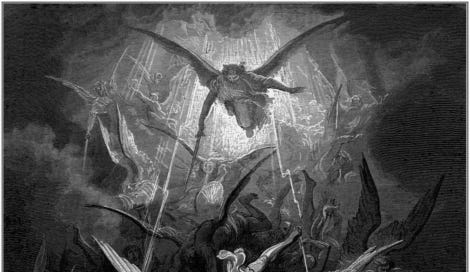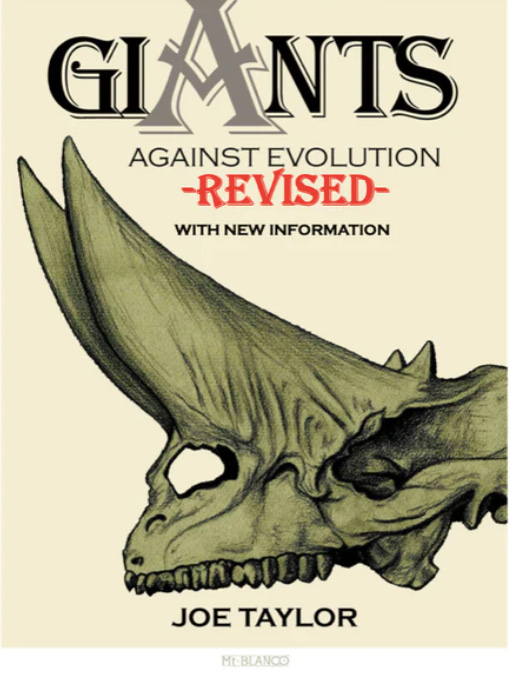The Book of Giants
Introduction
The earliest known reference to The Book of Og appears in the Gelasian Decree, an early medieval text that condemns it as heretical. Through extensive scholarly research, The Book of Og has been identified as a variant of the Manichaean Book of Giants, sometimes referred to as “Mani’s Book of Giants.” This fragmentary Manichaean version is attributed to Mani (c. 215–276 CE), the founder of Manichaeism, a dualistic gnostic religion deemed heretical by the early Christian Church. This version traces its origins to the Book of Giants found among the Dead Sea Scrolls but was later incorporated into Mani’s theological framework. Having access to the Qumran text, Mani reinterpreted and adapted its content to align with his own religious doctrines, shaping it within the context of Manichaean cosmology.
Fragments of Mani’s version survive in multiple languages:
· Middle Persian (used during the Sassanian Empire, 224–654 CE)
· Sogdian (spoken in Eastern Iran, 100–1000 CE)
· Old Uyghur (dating to the 9th–14th centuries CE)
Notably, the Sogdian and Uyghur fragments are later translations of Mani’s work, reinforcing the argument that The Book of Og is not an independent ancient text but a derivative work tied to the Manichaean tradition.
Clarifying the Chronology
1. The “Book of Og” is, in reality, Mani’s version of The Book of Giants, which originates from the Qumran texts and dates, at the earliest, to the third century CE.
2. The core material in Mani’s text draws from The Book of Giants, which itself was composed between the late third and second centuries BCE—long after the biblical period associated with Moses.
For those familiar with Dr. Heiser’s book, Reversing Hermon, The Book of Giants is classified as “Enochian material” due to its close thematic and literary connections with 1 Enoch. Importantly, the Dead Sea Scrolls provide the earliest textual witness to 1 Enoch and The Book of Giants—no manuscript evidence predates these sources (3rd–2nd century BCE). This study seeks to further investigate the Book of Giants by examining the fragmentary remains in both the Aramaic (circa 300 BC) and Manichaean (circa 250 AD) versions. The fragmentary Aramaic version of The Book of Giants was discovered among the Dead Sea Scrolls in 1947. Recently, inquiries have arisen regarding The Book of Og, also known as the Book of Giants, a text that has been cited in various discussions. It is essential to clarify that this book does not date back to the biblical period—particularly to the time when the historical Og, king of Bashan, was known. If anyone is promoting The Book of Og as an ancient biblical discovery, such claims should be met with skepticism, as they lack credible scholarly validation.
The Expansion of Genesis 6:4
A more comprehensive narrative can be found in The Book of Enoch, particularly in the section known as The Book of Watchers (Chapters 1–36). Enoch is one of the most enigmatic figures in biblical tradition; he is described as having been taken to heaven without experiencing death in the conventional sense.
The Book of Giants expands upon the brief reference in Genesis 6:4, which states that "there were giants on the earth in those days." The Book of Enoch is classified among the pseudepigrapha, a collection of texts attributed to ancient figures to lend credibility to their narratives. While not included in the canonical biblical texts, The Book of Enoch is considered an essential source in understanding the fallen angels and their offspring.
One of the most striking aspects of The Book of Enoch is its reference to the union between human women and the fallen angels. The offspring of these illicit unions were the Nephilim, giants who oppressed humanity and imparted forbidden knowledge, leading to widespread corruption. Due to the increasing wickedness that plagued mankind, God decreed the Great Flood as a means of divine retribution. According to the text, Enoch attempted to intercede on behalf of the fallen angels but was ultimately unsuccessful.
The Book of Giants and the Watchers
The Book of Giants elaborates on this story, focusing on the exploits and downfall of the Nephilim. It describes the council among the fallen angels, led by Shemihaza, who permitted and encouraged these unions with human women. Two of the most prominent giants mentioned are Ohya and Hahya, the sons of Shemihaza.
Although the Book of Giants survives only in fragments, parts of the text describe the disturbing dreams of the giants, their attempts to interpret these visions, and Enoch’s role in warning them of their impending doom. The giants, recognizing the ominous nature of their dreams, sought counsel from Enoch. However, despite their appeals, divine judgment remained inevitable.
Scholarly Perspectives on the Dating of The Book of Giants
The most comprehensive scholarly work on The Book of Giants is Stuckenbruck’s critical edition with commentary. His detailed analysis of Qumran fragments provides an authoritative resource for those seeking an academic perspective rather than speculative claims. Stuckenbruck’s summary on the dating of The Book of Giants highlights the complexity of establishing its precise origins:
“The date of the original composition of BG cannot be established with certainty. For Milik, this question was contingent on codicology and palaeography, as well as on his dating of other writings. Milik proposed that the earliest manuscript, 4QEnGiantsb (4Q530), dated to ‘the first half of the first century BCE.’ Furthermore, he associated another manuscript, 4QEnGiantsa (4Q203), with the early Herodian period. However, subsequent debates have raised questions about the exact dating and its relation to texts such as Jubilees and the Damascus Document.” (Stuckenbruck, 1997, pp. 28–31).
Scholars such as Beyer suggest a possible composition date for The Book of Giants in the late third century BCE, arguing that it was originally composed in Hebrew and circulated alongside The Book of Watchers. Meanwhile, other studies propose alternative dates, with García Martínez noting linguistic parallels between 4Q530 col. ii, ll. 17–19, and Daniel 7:9–10, suggesting a date range between the late third century BCE and 164 BCE.
The Broader Context
The setting of The Book of Giants is during the lifetime of Enoch, the great-grandfather of Noah. It describes a time when human beings were said to live much longer, with figures like Methuselah reportedly reaching 969 years. This time period, preceding the Great Flood, is depicted as one of moral decline, supernatural interventions, and divine retribution.
The text portrays a world in which angels and humans interacted freely, though such relationships were deemed transgressive. This interaction led to the birth of the Nephilim, described as beings of great stature and strength. While Genesis 6:1-4 briefly alludes to these events, The Book of Giants provides a more expansive narrative, recounting how the fallen angels and their offspring spread corruption and violence.
Many scholars interpret the story of the Watchers and their offspring within the framework of ancient class structures. The Watchers, originally tasked with guiding humanity, could be compared to a priestly or noble class, while their human counterparts represented common society. The giants’ actions—taking wives from higher-status families, amassing power, and waging wars—echo themes of social transgression found in various mythologies, including Greek and Near Eastern traditions.
The Book of Giants describes these Nephilim as not only possessing great size but also knowledge that led to human depravity. They introduced warfare, divination, and the use of forbidden sciences. These elements align with similar narratives found in Mesopotamian myths about divine beings who imparted wisdom to humankind, often with catastrophic results.
3500B.C.The Days of Jared
The text places Enoch in the role of mediator between God and the fallen angels. The giants, realizing their impending doom, sought out Enoch to intercede on their behalf. However, his attempts at advocacy failed, and divine judgment was set in motion. Enoch’s warnings foreshadow the coming of the Great Flood, a theme that mirrors the biblical account in Genesis.
The Book of Og is not an ancient biblical text but rather a misidentified version of Mani’s Book of Giants, which itself was based on older Jewish traditions. Any claims suggesting that this book originates from the time of Moses or the Old Testament period are unfounded. Instead, the most reliable sources for studying The Book of Giants are the Qumran fragments, analyzed in-depth by scholars like Stuckenbruck.
Thank you for reading Dr. Aaron Judkins Substack. To continue reading this article and view the footnotes, consider upgrading your subscription. Unlock full access to this and other in-depth content exploring mysteries, legends, and the truth behind them. Your subscription supports our work and allows us to bring you more stories like this. Upgrade today and dive deeper into the world of giants and myths!
As a token of our appreciation, we're offering you a limited-time offer of 20% off a paid subscription for your first year. Thanks again for reading!
PS. If you loved this article, be sure to head over to our Ancient Pathways Patreon site and download the new Book of Giants Library Volumes 1-3, Joe Taylor Radio: Giants, Fossils, Dinosaurs & Mammoths. Ohh, & Bigfoot.., Judd Burton’s Giant interview on Coast to Coast AM and Joe Taylor’s book “Giants: Against Evolution”.
Keep reading with a 7-day free trial
Subscribe to Dr. Aaron Judkins Substack to keep reading this post and get 7 days of free access to the full post archives.







